With each passing season, the allure of gardening seems to grow stronger. Whether you’re a seasoned horticulturist or just dipping your fingers into the soil for the first time, the joy of nurturing life and harvesting its bounty is universally appealing. One method that’s been gaining popularity among gardeners of all levels is raised bed gardening. This approach offers numerous advantages, from better soil drainage and weed control to easier access and improved yields. However, like any gardening endeavor, success often hinges on the quality of the soil. Here’s where the magic of technology meets the practicality of budgeting: the raised bed soil calculator.
In this blog post, we’ll explore how leveraging this tool can improve your gardening experience and save you money in the process. So, grab your gardening gloves, and let’s dig into the world of budget-friendly gardening with the help of a raised bed soil calculator.
Understanding Raised Bed Gardening
Raised bed gardening is a method of growing plants in beds that are elevated above the ground. These beds are typically framed with wood, stone, metal, or other materials and filled with soil. The concept of raised bed gardening has been around for centuries, with historical examples dating back to ancient civilizations such as the Egyptians and Romans.
One of the primary advantages of raised bed gardening is its ability to overcome soil limitations. By creating a contained environment, gardeners can fill their raised beds with high-quality soil, customized to meet the specific needs of their plants. This is particularly beneficial in areas with poor soil quality or limited space for traditional gardening.
Additionally, raised beds offer improved drainage, which can help prevent waterlogging and soil compaction. This promotes healthier root development and reduces the risk of root rot and other water-related issues. Raised beds also provide better control over weeds, as the elevated design makes it easier to spot and remove unwanted plants.
Another advantage of raised bed gardening is its accessibility. The elevated height of the beds minimizes the need for bending or kneeling, making it easier for people with physical limitations to tend to their garden. This accessibility has contributed to the popularity of raised bed gardening among elderly gardeners and those with mobility issues.
Overall, raised bed gardening offers numerous benefits, including improved soil quality, better drainage, weed control, and accessibility. Whether you’re a seasoned gardener or a beginner, incorporating raised beds into your gardening practice can enhance your gardening experience and yield impressive results.
The Importance of Soil in Gardening
Soil is the foundation of successful gardening, serving as the medium through which plants obtain water, nutrients, and support for their roots. Understanding the composition and characteristics of soil is essential for ensuring optimal plant growth and productivity.
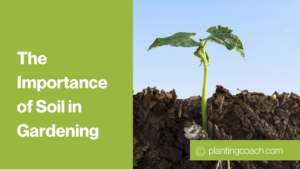
Healthy soil consists of a balance of organic matter, minerals, air, and water. Organic matter, such as decomposed plant material and compost, provides essential nutrients and improves soil structure, allowing for better root penetration and water retention. Minerals, including sand, silt, and clay, contribute to soil texture and drainage properties. Adequate air and water spaces within the soil are necessary for root respiration and nutrient uptake by plants.
Maintaining optimal soil pH is also crucial for gardening success. Different plants have varying pH preferences, and soil acidity or alkalinity can affect nutrient availability. Testing and adjusting soil pH as needed can help ensure that plants receive the nutrients they require for healthy growth.
In addition to providing essential nutrients and support for plants, soil plays a vital role in ecosystem health. Healthy soil acts as a carbon sink, sequestering carbon dioxide from the atmosphere and mitigating climate change. It also supports diverse microbial communities that contribute to nutrient cycling and soil fertility.
However, soil is not always perfect. Many gardeners face challenges such as poor drainage, nutrient deficiencies, compaction, and pH imbalances. Addressing these issues often requires amending the soil with organic matter, fertilizers, or other soil amendments.
In the context of raised bed gardening, the quality of the soil becomes even more critical. Since raised beds are filled with soil brought in from elsewhere, gardeners have the opportunity to customize the soil to meet the specific needs of their plants. By using high-quality soil mixes tailored to their crops, gardeners can create an ideal growing environment that promotes healthy plant growth and maximizes yields.
Introducing the Raised Bed Soil Calculator
In the realm of gardening, precision is key, especially when it comes to soil. This is where the raised bed soil calculator enters the scene as a game-changer for both novice and seasoned gardeners alike.
A raised bed soil calculator is a digital tool designed to streamline the process of determining the quantity of soil needed to fill a raised bed garden. By inputting the dimensions of your raised bed, along with the desired depth of soil, the calculator generates accurate measurements of soil volume required for your project.
These calculators typically take into account factors such as bed length, width, and height, as well as the depth of soil desired. Some advanced calculators may even consider adjustments for soil settling or compaction over time.
One of the primary benefits of using a raised bed soil calculator is its ability to prevent over-purchasing of soil. By accurately calculating the volume needed, gardeners can avoid unnecessary expenses on excess soil bags or truckloads. This not only saves money but also reduces waste and environmental impact.
Furthermore, a raised bed soil calculator helps ensure that gardeners have enough soil to adequately fill their raised beds. Insufficient soil volume can lead to shallow root systems, poor drainage, and reduced plant growth. By providing precise measurements, the calculator helps gardeners achieve optimal soil depth for healthy plant development.
Raised bed soil calculators are available in various formats, including web-based tools, mobile apps, and downloadable spreadsheets. Many gardening websites and online forums offer free access to these calculators, making them easily accessible to gardeners of all backgrounds.
The raised bed soil calculator is a valuable resource for gardeners looking to optimize their gardening efforts. By simplifying the soil planning process and promoting efficient resource use, these calculators empower gardeners to create thriving raised bed gardens while saving time, money, and effort.
How to Use a Raised Bed Soil Calculator
Using a raised bed soil calculator is a straightforward process that can significantly simplify your gardening planning. Here’s a step-by-step guide on how to effectively utilize this tool:
1. Gather Bed Dimensions
Begin by measuring the dimensions of your raised bed. Measure the length, width, and height of the bed in feet or meters. For irregularly shaped beds, break them down into simpler geometric shapes (rectangles or squares) and measure each section separately.
2.Determine Desired Soil Depth
Decide on the depth of soil you want to fill your raised bed. Most vegetables and flowers require a soil depth of at least 6 to 12 inches (15 to 30 centimeters) for optimal root growth. However, this may vary depending on the specific needs of your plants.
3. Input Data into the Calculator
Access a raised bed soil calculator tool, either through a website, mobile app, or downloadable spreadsheet. Enter the measured dimensions of your raised bed, including length, width, and height, as well as the desired soil depth.
4.Calculate Soil Volume
Once you’ve entered all the necessary data, click the “calculate” button to generate the soil volume required for your raised bed. The calculator will typically display the result in cubic feet, cubic yards, or liters, depending on your preferred unit of measurement.
5. Adjust as Needed
Review the calculated soil volume and make adjustments if necessary. Consider factors such as soil settling or compaction over time, as well as any additional space needed for amendments or top dressing.
6. Procure Soil Materials
Armed with the calculated soil volume, you can now purchase the appropriate amount of soil materials for your raised bed. Whether you opt for pre-mixed soil blends or DIY soil mixes, knowing the exact quantity needed will help you make informed purchasing decisions and avoid unnecessary expenses.
7. Fill Your Raised Bed
Once you have the soil materials on hand, fill your raised bed to the desired depth. Take care to evenly distribute the soil and avoid compacting it excessively, as this can hinder root growth and water infiltration.
By following these steps, you can effectively use a raised bed soil calculator to determine the precise amount of soil needed for your gardening project. This ensures that you have adequate soil volume to support healthy plant growth while minimizing waste and unnecessary expenses.
Cost-Saving Benefits of Using a Raised Bed Soil Calculator
The cost-saving benefits of using a raised bed soil calculator are undeniable. By accurately calculating the volume of soil needed for your raised bed garden, you can avoid over-purchasing soil materials, thereby saving money and reducing waste.
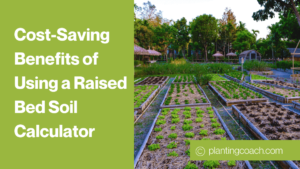
Overestimating soil requirements can lead to unnecessary expenses on additional soil bags or truckloads, while underestimating can result in multiple trips to the store or nursery, increasing fuel costs and time spent.
Moreover, by knowing the exact quantity of soil needed, you can make informed purchasing decisions and take advantage of bulk discounts or sales. This allows you to stretch your gardening budget further and invest in other essential supplies or plant varieties.
Additionally, by optimizing soil usage, you contribute to environmental sustainability by reducing excess packaging, transportation emissions, and soil depletion. In essence, the raised bed soil calculator not only benefits your wallet but also promotes eco-friendly gardening practices, making it a win-win solution for both your finances and the planet.
Conclusion:
In conclusion, the raised bed soil calculator emerges as a valuable tool for budget-conscious gardeners seeking to maximize their gardening efforts. By providing accurate measurements of soil volume needed for raised bed gardens, this tool enables gardeners to save money, minimize waste, and promote environmental sustainability. With the cost-saving benefits and eco-friendly advantages it offers, the raised bed soil calculator empowers gardeners to create thriving gardens while staying within budget constraints. So, whether you’re a seasoned gardener or a beginner, harness the power of technology and make your gardening dreams a reality with the help of a raised bed soil calculator.

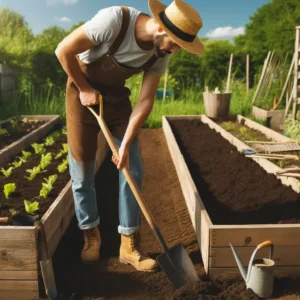

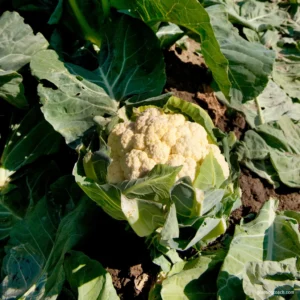
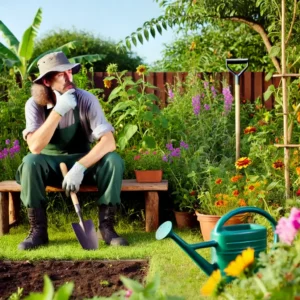



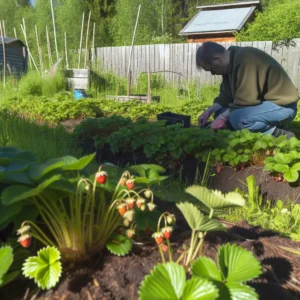
8 thoughts on “Budget-Friendly Gardening with a Raised Bed Soil Calculator”